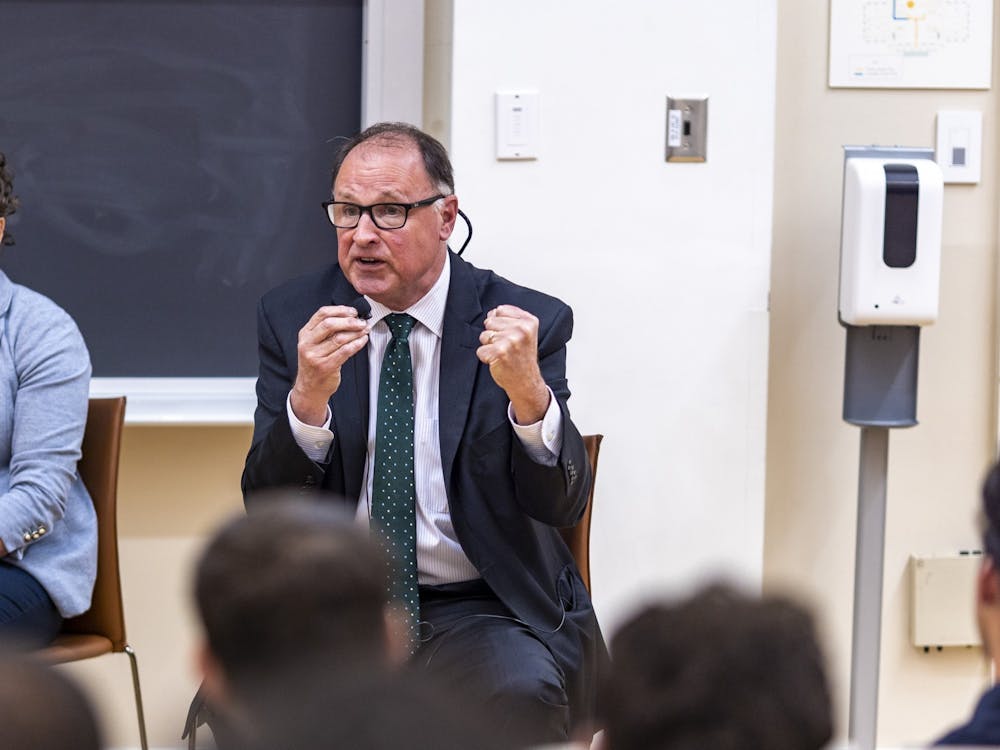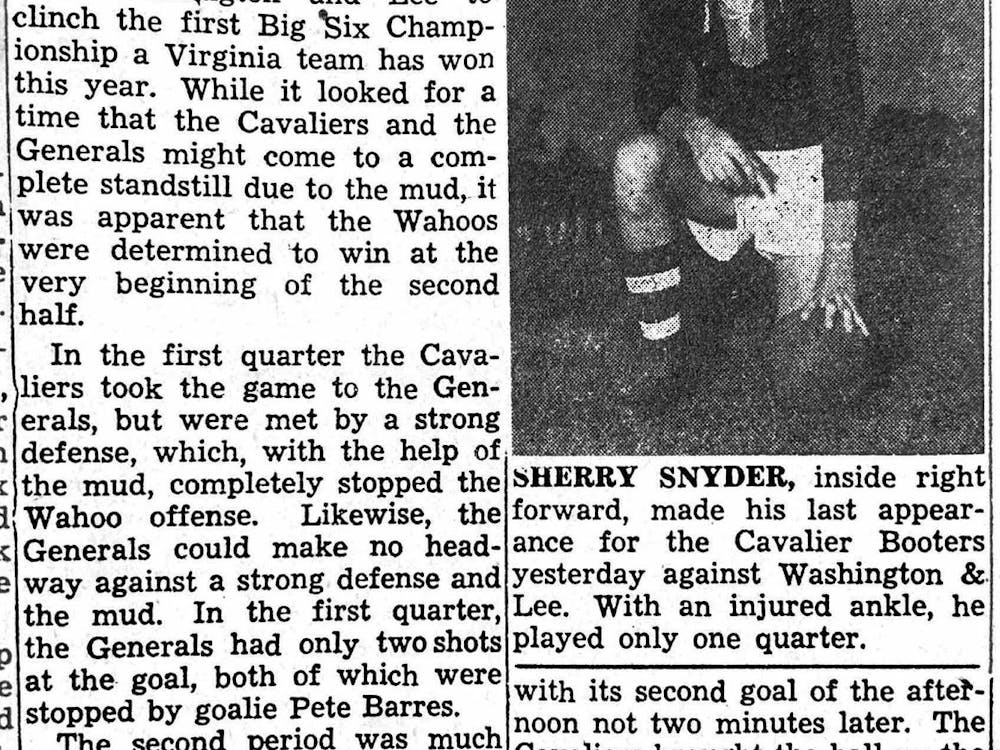Six days ago, the University's Office of Emergency Management conducted a tornado emergency drill. At about 9:50 a.m. students began receiving text messages and email alerts, while sirens sounded in classrooms and buildings around grounds.
Only a few days before the tornado drill, Albemarle County Police responded to a bomb threat at the University Medical Center's Fontaine Research Park. No one was injured during the incident and the Police swiftly and successfully evacuated the buildings at risk, but students were never directly informed about the threat.
Alerting the Community\nMarge Sidebottom, director of the University's Office of Emergency Management, and Pat Lampkin, Vice president and chief student affairs officer, said police officials, along with Michael Strine, the University's executive vice-president and chief operating officer, are authorized to release University-wide text and email alerts during emergency situations.
"If the shift commander [at the police department]... believes there's an imminent threat, they go ahead and put that out," Sidebottom said in an email.
Sidebottom said the University does its best to treat situations as unique and to respond to them accordingly. The type, size and location of a threat all impact how the University will react.
In the case of the bomb threat at Fontaine Research Park, Sidebottom said officials had "evaluated [the threat] as a contained incident unlikely to cause harm to students, staff and faculty on the University's Grounds." All employees of the Medical System were informed of the incident, but students on Grounds were not.
Lampkin said if the situation had involved a shooter, the University's response would have been entirely different.
"That would be a text alert, probably not just an email," she said. "It depends on if the person is still out [there and] if we've identified who they are."
Sidebottom said the Office of Emergency Preparedness sends warnings and messages through as many channels as possible to reach affected parties.
Texts and emails get the word out to students and others, those in the Medical Center receive a page and hear loudspeaker announcements, and those walking outside may rely on sirens and an outdoor public address system.
During the tornado drill last week, Sidebottom said two outdoor sirens partially malfunctioned and one completely malfunctioned during the drill. Had it been a real disaster, however, everyone outside would have heard enough of a warning to check cell phones, the Internet or other sources to discover what was happening.
For those universities participating in federal financial aid programs, the Clery Act has also created national standards dictating when students must be notified about incidents.
"Students are probably most familiar with the email notifications that are sent out through [University Police Department Chief Michael] Gibson," University Police Lieut. Melissa Fielding said. Those notifications are sent when robbery or aggravated assault incidents occur and a recurrence looks likely.
Fielding said the lack of notifications sent by Gibson during the past four-and-a-half months was a positive sign.
"We just haven't had another incident - knock on wood - that required a notification to be sent," Fielding said.
Responding to University Threats\nSidebottom said University Police, City Police or County Police act as the first line of response to any situation, depending on where the threat is located.
"A call to 911 triggers an emergency response from the appropriate responding agency," Sidebottom said. "On Grounds, the responding agency is University Police. At properties in the City and County, City and County police are the first responders and in command of the incident."
Strine, however, is ultimately responsible for handling emergency situations at the University and leading the incident command system with key members of the University police and administration.
Strine coordinates with a Policy Group, which includes Sidebottom, Chief Facilities Officer Donald Sundgren, Gibson and the Associate Vice President for Public Affairs Carol Wood.
To be able to collaborate more easily, the University, City and County share the Emergency Communications Center (ECC).
Fielding said the Center serves as a 911 dispatch hub for the University, City and County, which all have good working relationships with local law enforcement. Dispatchers at the ECC relay information to the appropriate fire, rescue or law enforcement agency according to the incident's location.
Barry Meek, an associate general counsel for the University, said the ECC was a model for universities across the country.
"A lot of jurisdictions could learn from what we do here because we cooperate so well with each other," Meek said.
Lampkin said the University follows a "Critical Incident Management Plan" which reflects national standards, allowing departments across the country to communicate during emergency situations.
"The incident command system was first established by fire departments to manage large, long-term incidents," Fielding said.
"The top-ranking or designated official of the public safety [or police] department" trains employees at the University, as well as across the nation, she added.
The University's 2010 Security Report identifies three basic levels of threats, which differ in the percentage of the University affected and the severity of the threat. An incident's threat level determines who is informed about the threat and how much outside assistance is required to handle the emergency.
A "level one" threat, such as a small fire, is least severe and affects only a few members of the University community, according to the report. The University expects to solve these problems without much outside assistance.
By contrast, a "level three" threat affects a large group in a broad area and disrupts "some or all normal University operations." Fielding said an active shooter would be a level three threat.
Fielding said "level two" incidents such as a building fire are more amorphous and may trigger varying levels of response by University officials.
"A [l]evel [t]wo incident is a major emergency that disrupts sizeable portions of University property and/or affects a substantial subset of the University community," according to the report. "These events may escalate quickly, and have serious consequences for life-safety or mission-critical functions."
Sidebottom said the bomb threat two weeks ago was considered a "level two" emergency, because it was a localized danger.
She added, however, emergency preparedness officials ask the basic questions of "What's the situation [and] what do we need here?" when responding to threats instead of using a rigid three level system in the heat of the moment.
Lampkin said the hectic decision-making process in the moment of an emergency situation makes it impossible to identify a strict method administrators use to evaluate emergencies.
"They're always easier to figure out before and after somehow," Lampkin said.
Student Participation\nFielding said her law enforcement experience has taught her the need for emergency preparedness to be a communal effort, rather than a top-down affair.
"As a law enforcement officer who has a strong background in crime prevention, I can't say enough how important it is for every member of the community to be tuned in to what's happening and what's going on," Fielding said. "It's difficult for a faculty member, staff member or police officer to be with every member of the community at all times."
Hoos Ready, a CIO dedicated to emergency preparedness, works to encourage students to be proactive about their own security, Vice President of Publicity Kim Duong and Vice President for Programs Abha Arora said.
The CIO is a "special status" organization, so it runs out of and works with the Office of Emergency Preparedness. It formed as a response to the Virginia Tech massacre.
"We are from the Office of Emergency Management trying to educate the students," Arora said. "Our job is mainly... to relay information back to the students."
The organization maintains a Twitter account and Facebook page, and sends the group's 1,000-member listserv monthly tips for how to be safe, Duong said in an email. The group has also begun hosting workshops which teach students what to do when confronted with specific emergencies.
Arora and Duong both said they trusted the University to take care of students and inform them of impending disasters. Both, however, said students had an important role in staying safe on Grounds.
"Students don't have to be proactive to be safe, but I feel like the more proactive you are, the more prepared you are," Duong said. "Just because you don't constantly find ways to be prepared for an emergency doesn't mean you're not safe [at] this University."
Arora said Hoos Ready will have a workshop next month about how to be prepared for a shooting on Grounds, to commemorate the five-year anniversary of the Virginia Tech massacre.
Sidebottom said people who receive information about a possible incident have a responsibility to pass it on to not only authorities, but also those around them to help improve safety on Grounds.
"This really is everybody's job," Sidebottom said. "As a community that is caring about and for one another, everybody needs to embrace that"







